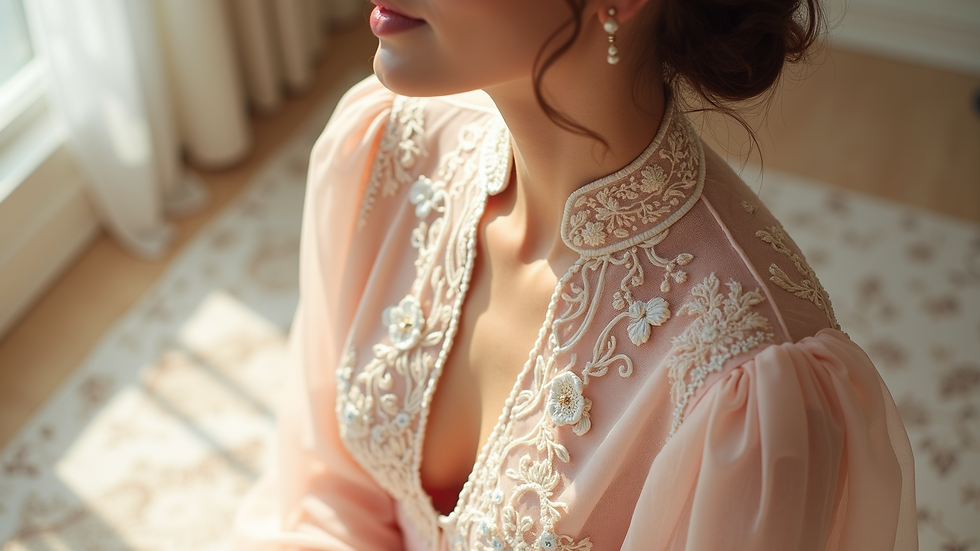The Beauty and Elegance of Traditional Pakistani Wedding Attire
- Amzi

- Aug 28
- 4 min read
Traditional Pakistani wedding attire is a stunning reflection of the country’s rich cultural heritage and artistic craftsmanship. Every piece tells a story of tradition, elegance, and celebration. From the intricate embroidery to the vibrant colors, Pakistani wedding clothes are designed to make the bride and groom stand out on their special day. This article explores the beauty and elegance of these timeless garments, highlighting their significance and the artistry behind them.
The Rich Heritage of Pakistani Fashion in Wedding Attire
Pakistani fashion has a long history rooted in diverse cultural influences, including Mughal, Persian, and Central Asian styles. This blend has created a unique aesthetic that is both regal and graceful. Traditional wedding attire often features luxurious fabrics such as silk, chiffon, velvet, and organza, which are carefully chosen for their texture and drape.
The embroidery work on these garments is a testament to the skill of Pakistani artisans. Techniques like zardozi (metallic thread embroidery), gota patti (applique with gold or silver ribbons), and dabka (couching with metallic threads) add depth and richness to the fabric. These embellishments are not just decorative but also symbolic, representing prosperity, happiness, and blessings for the couple.

Key Elements of Traditional Pakistani Wedding Attire
Pakistani wedding attire varies by region but generally includes several key elements that contribute to its elegance:
The Bridal Dress (Lehenga or Sharara): The lehenga is a long skirt paired with a matching blouse and dupatta (scarf). Shararas are wide-legged pants paired with a long shirt and dupatta. Both styles are heavily embroidered and often feature beadwork and sequins.
The Groom’s Sherwani: The groom typically wears a sherwani, a long coat-like garment, often paired with churidar pants. Sherwanis are made from rich fabrics and decorated with embroidery or brocade patterns.
Dupatta: The dupatta is an essential part of the bridal ensemble, draped elegantly over the head and shoulders. It is often the most heavily embellished piece, symbolizing modesty and grace.
Jewelry and Accessories: Traditional jewelry such as jhumkas (earrings), maang tikka (forehead ornament), and bangles complement the attire, enhancing the overall look.
These elements come together to create a harmonious and regal appearance that is both traditional and fashionable.
The Role of Color and Fabric in Pakistani Fashion
Color plays a vital role in Pakistani wedding attire, with each hue carrying its own meaning and significance. Red is the most popular bridal color, symbolizing love, passion, and prosperity. However, brides also choose other vibrant colors like maroon, gold, pink, and orange, depending on personal preference and regional customs.
Fabric choice is equally important. Silk and velvet are favored for their luxurious feel and ability to hold intricate embroidery. Lightweight fabrics like chiffon and georgette are used for dupattas to add softness and flow to the outfit. The combination of color and fabric creates a visually stunning effect that captures the essence of celebration.

Modern Trends in Traditional Pakistani Wedding Attire
While traditional designs remain popular, modern Pakistani fashion has introduced innovative styles that blend classic elements with contemporary trends. Designers are experimenting with cuts, silhouettes, and fabric combinations to create fresh looks that appeal to younger generations.
One notable trend is the use of jacket lehengas, which combine the traditional lehenga skirt with a stylish jacket instead of a blouse. This fusion offers a modern twist while maintaining the elegance of traditional attire. For those interested, there is a beautiful collection of pakistani bridal dresses featuring jacket lehengas that perfectly balance tradition and modernity.
Additionally, pastel shades and subtle embellishments are gaining popularity for their understated elegance. Brides are also opting for mix-and-match ensembles, combining different textures and colors to create personalized looks.

Tips for Choosing the Perfect Traditional Wedding Outfit
Selecting the ideal wedding attire can be overwhelming given the variety of options available. Here are some practical tips to help make the process easier:
Consider the Wedding Theme and Venue: The outfit should complement the overall theme and setting of the wedding. For outdoor events, lighter fabrics and colors may be more comfortable.
Focus on Comfort: Weddings can be long and involve a lot of movement. Choose fabrics and designs that allow ease of movement and breathability.
Personal Style Matters: While tradition is important, the outfit should reflect your personality. Don’t hesitate to incorporate modern elements or favorite colors.
Plan Ahead: Custom-made outfits require time for fitting and adjustments. Start the selection process early to avoid last-minute stress.
Accessorize Wisely: Jewelry and accessories should enhance the outfit without overpowering it. Balance is key to achieving a cohesive look.
By keeping these tips in mind, brides and grooms can find attire that is both beautiful and practical for their big day.
Embracing Tradition with a Touch of Elegance
Traditional Pakistani wedding attire is more than just clothing - it is a celebration of culture, artistry, and identity. The intricate designs, vibrant colors, and luxurious fabrics come together to create ensembles that are truly breathtaking. Whether you prefer classic styles or modern interpretations, the elegance of Pakistani fashion ensures that every wedding outfit is a masterpiece.
Exploring the world of traditional Pakistani wedding attire offers a glimpse into a rich cultural heritage that continues to inspire and captivate. With the right choice of outfit, every bride and groom can feel regal and radiant as they embark on their new journey together.


Comments